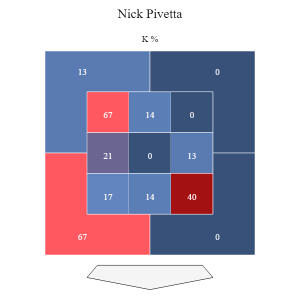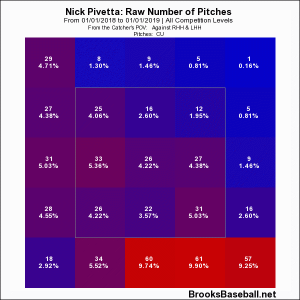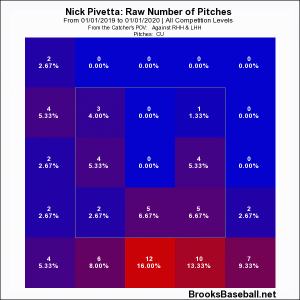Saint Nicholas, the inspiration for Santa Claus, was a pious and kind man who gave away all his wealth to help the poor and the sick. Nick Pivetta, on the other hand, has been kind…to opposing batters and made those who invested draft capital in him vomit-inducing sick. As a result, his ownership in ESPN leagues has decreased 11.1% to 61.7% owned. Trash or treasure?
Pivetta was a popular preseason sleeper pick. His fastball was clocked in the upper 90s during spring training and he was coming off two seasons in which the innings and K/9 ticked up while the BB/9 went down. Well, Pivetta has been getting pummeled to begin the season, as he’s allowed 4, 3, and 7 earned runs in the three games he’s started. The ERA is at 9.45 and the Philly fans are getting restless. They did throw batteries at Santa Claus, so I’m sure they’d have no problem throwing them at a saintless Nick.
What’s been the problem for Nick?
The two numbers that jumped out to me were the swinging strike percentage and hard hit rate. According to Fangraphs, the SwStr% is 8.3%. That number was 12% last season. The hard hit rate, according to Baseball Savant, is at 42%. Last year, it was at 33.9%. When I see spreads like that, my mind first goes to fastball velocity then to hitters spitting at offspeed offerings and waiting for their pitch. Well, the fastball velocity has been 94 mph on average. Last season, it was at 94.8 mph, so not too significant of a change. As for laying off offspeed pitches? The chase rate is down 5% from last season.
Looking at the Statcast Zone Charts may show the primary issue for Pivetta this season. He is a fastball, curveball, and slider pitcher. He is throwing the fastball 53.4% of the time, the slider 13.3%, and the curveball a whopping 30.1%. The last two seasons, that number has been 15.5% and 21.7% respectively. The curveball and slider are potent pitches low and away to righties and down and in to lefties.
This chart is for the 2018 season.

This one is for 2019.

He is not able to put away batters with the low and away offspeed pitches to righties and down and in one to lefties. It’s likely a combination of batter’s laying off the pitches and Pivetta missing location. The two charts below confirm that, as the percentage of curveballs ending up in the middle of the plate is almost 7% more frequent than last season.


Sure, it’s a small sample size of 13.1 innings, but there’s reason for optimism. The BABIP is currently .447 while the LOB% is 56.5%. The career rates for both are .336 and 67.3%, so some positive regression should occur. While the ERA is at 9.45, the xFIP sits at 3.99. Here’s what gives me the most optimism, though. While the barrel% at 14% is well above the MLB average of 7.9%, the solid contact rate is only 2% (MLB average is 5.5%) and the flare/burner% is 36% (MLB average is 24.9%). That last number ties in well to the elevated BABIP number.
The first three teams that Pivetta faced this season, ATL, MIN, and WSH, are 8th, 10th, and 13th in OPS against right-handed pitching this season. The next two scheduled starts are against the Mets and Rockies in Colorado, so the sledding will be tough in the short term, but then he gets to face the Marlins.
It’s early in the season. The fastball velocity will increase. The location of the offspeed pitches will improve. He will give up his share of home runs and the home park doesn’t help that, but he has the potential to strike out more than a batter per inning. TREASURE


